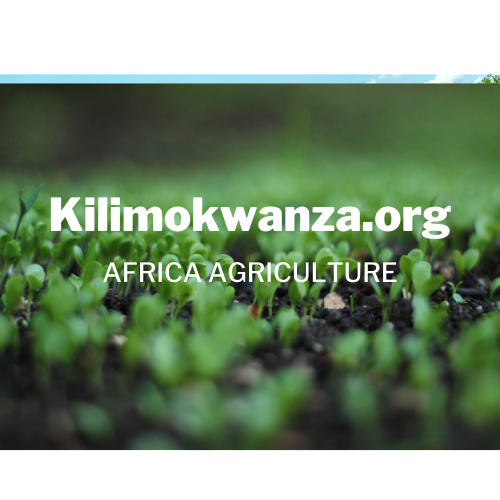By Anthony Muchoki
Data from Tanzania’s agriculture ministry shows that for eight continuous years, the country has been food self-sufficient. It has been exceeding 100 percent of demand, with its most important food crops- maize, rice, and cassava, respectively.
As other East African nation by March/April 2019, were grappling with maize shortage, a sizable number of farmers in Tanzania’s southern highlands were yet to sell last season’s produce, awaiting improved prices.
Mr. Joseph Sauga, a farmer in Iponda, Wanging’ombe, Iringa Region has 12 acres of land under improved seed maize cultivation. “Many of us, still have last season’s maize stock as the price was not friendly.. the supply was more than demand,” he notes, adding they were waiting patiently for neighboring countries to run out of maize.
The last time Tanzania experienced a serious shortage of maize was in 2010 and since then, it has established itself as a maize powerhouse.
According to the Ministry of Agriculture in 2010 shortage, the production was 4.7m and by 2015, it had risen to 6m t in 2015.
By 2014 even the Food and Agriculture Organization of the United Nations (FAO) was impressed. FAO Director-General José Graziano da Silvain declared that Tanzania had achieved self-sufficiency with 1.6 million tons of maize and 800 000 tons of rice surpluses.
The agriculture ministry data indicates that 2016/17 maize production had reached 6.3m t while the domestic demand was 5.2m t.
A public-private partnership and support from donors in uplifting agriculture have progressively made Tanzania turn into a net exporter of maize, the most important food crop in East Africa.
The journey to becoming a net exporter by the East African Community’s largest and most populous nation of over 57 million people has been very deliberate.
While there had many efforts since independence to lift up the sector, now AGRA board member, but then president of Tanzania, Dr. Jakaya Mrisho Kikwete, launched Kilimo Kwanza/Agriculture First drive in 2009, with the private sector at the wheels, as the road map to food security and production of surplus for trade.
AGRA was one of the many development partners supporting the government as the drive was launched.
“After AGRA was launched in 2006- Tanzania was among the first four priority countries alongside- Ghana, Mali, Mozambique,” notes Mr. Vianey Rweyendela, AGRA Country Manager.
“In supporting the government of Tanzania, since 2007 AGRA has been supporting the Government’s agriculture,” he notes. The broad-based support has led to an increased availability of well-adapted crop varieties, building the technical capacities of various agribusiness partners like seed companies and agrodealers as well as the introduction of new crop storage technologies.
AGRA’ over a-decade support to Tanzania government-owned research institutions – building the capacity of plant breeders, development or perpetuation of improved maize, cassava, and rice varieties(and other crops), is bearing fruits. It’s notable its not only AGRA that has been offering the support but many other partners as well.
Some of the seed varieties that have rallied the increased production over the years, among other vital actions along the value chain, had the hand of Agra financing in one way or the other.
Mass adoption of improved maize and cassava varieties produced by government-owned research institutions have played a key role in the boom the farmers are experiencing.
Ms. Rehema Mbuya, Agro dealer at Mtwango Village, Makambako, Iringa attests that breeder seeds from Mbeya-based Agricultural Research Institute-Uyole (ARI-Uyole), especially, Uyole 615, are most widely used in the Southern Highlands Zone.
ARI-Uyole with support from AGRA among other partners has been developing early generation seeds for private seed companies to produce sufficient quantities of certified and/or quality declared.
Dr. Tulole Bucheyeki, Director of ARI-Uyole centre notes that Uyole 615 is one of the most successful maize breeds from the center which seed companies buy from the institution for regeneration. It is one of the most widely used breeds in Southern Highlands Zone,” he attests. The zone comprises -Mbeya, Ruvuma, Iringa, Rukwa, Njombe and Katavi regions.
Most of the seed companies in the zone has been supported by AGRA in one way or the other, he attests, and the partnership has greatly contributed to food self-sufficiency.
For cassava, it used to be the worst case scenario 8 years ago as the crop was decimated by cassava mosaic disease across the country. Zanzibar Agricultural Research Institute (ZARI)’s head of Roots and Tuber Research, Dr. Haji Saleh notes it was AGRA that financed the development of “Kizimbani” cassava variety, which has become the most widely grown in Tanzania’s spice islands.
In the mainland “Mkombozi” and “Mkuranga” cassava are the most in Southern Highlands, Western Highlands and in Coastal area. Sugarcane Research Institute- Kibaha, which has also previously received AGRA support is one of the institutions which has been breeding the variety, which, like its name, many farmers see it as a savior as it is pest and drought resistant.
March 31, 2019 data from the Ministry of Agriculture shows higher consumption of cassava than rice in 2018/19 in Tanzania mainland unlike in the previous years.
According to the ministry proportional contribution (for food security) crop wise for 2018/2019 consumption for maize was at 37%(the highest), followed by Cassava 17%, rice 13%, pulses 11% and banana 7%.
For years, maize has led the pack, followed by rice but things could be changing as more people are consuming more cassava than rice in the mainland. In Zanzibar, cassava retains the second spot after rice. Both maize and cassava are key food and cash crops in Tanzania’s drive.
